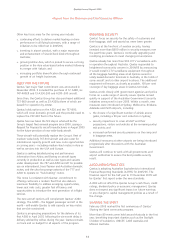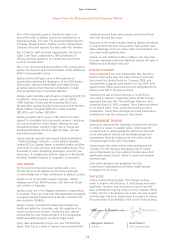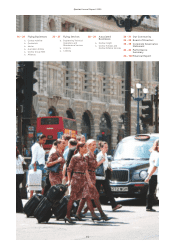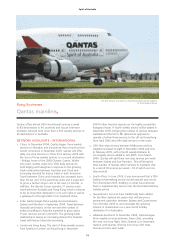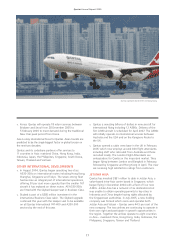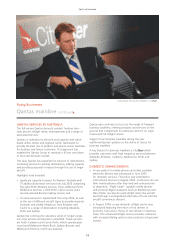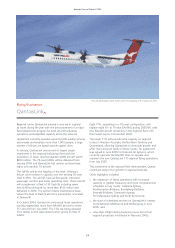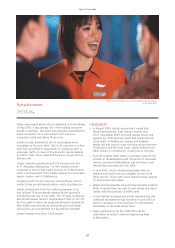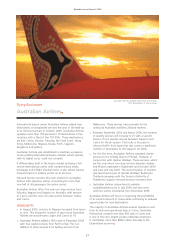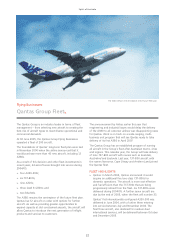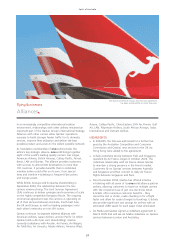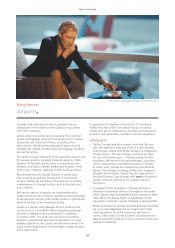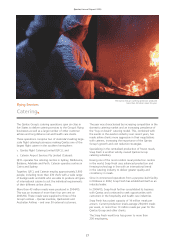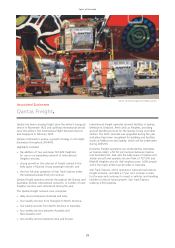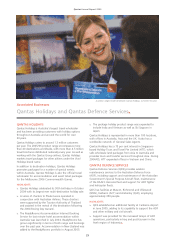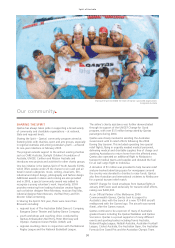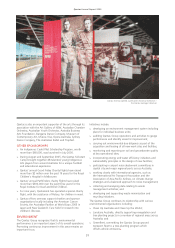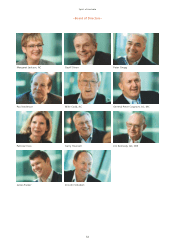Qantas 2005 Annual Report Download - page 24
Download and view the complete annual report
Please find page 24 of the 2005 Qantas annual report below. You can navigate through the pages in the report by either clicking on the pages listed below, or by using the keyword search tool below to find specific information within the annual report.
22
The Qantas Group is an industry leader in terms of fleet
management – from selecting new aircraft to creating the
best mix of aircraft types to meet diverse operational and
commercial demands.
At 30 June 2005, the Qantas Group Flying Businesses
operated a fleet of 200 aircraft.
The foundations of Qantas’ long-term fleet plan were laid
in November 2000 when the airline announced that it
would purchase more than 40 new aircraft, including 12
A380s.
As a result of this decision and other fleet investments in
recent years, 24 aircraft were brought into service during
2004/05:
x four A330-300s;
x six 737-800s;
x nine A320s;
x three Dash 8 Q300s; and
x two BAe146s.
The A380 remains the centrepiece of the future fleet plan.
Qantas has 12 aircraft on order with options for further
aircraft. As well as providing greater opportunities to
expand capacity at slot constrained airports, the aircraft will
allow Qantas to introduce the next generation of inflight
products and services to customers.
The announcement by Airbus earlier this year that
engineering and industrial issues would delay the delivery
of the A380 to all customer airlines was disappointing news
for Qantas. Work is on track on a wide-ranging, multi-
business unit program that will see Qantas ready to take
delivery of its first A380 in April 2007.
The Qantas Group has an established program of naming
all aircraft in the Group’s fleet after Australian towns, cities
and regions. This calendar year, the Group will take delivery
of nine 737-800 aircraft with names such as Evandale,
Australind and Eudunda. Last year, 737-800 aircraft with
the names Narooma, Cape Otway and Arnhem Land joined
the Qantas fleet.
FLEET HIGHLIGHTS
x Qantas: In March 2004, Qantas announced it would
acquire an additional five two-class 737-800s for
domestic operations. The aircraft is more cost effective
and fuel efficient than the 737-300s that are being
progressively retired from the fleet. Six 737-800s were
delivered during 2004/05. A further seven aircraft are
due by the end of 2005, when the fleet will number 33.
Qantas’ first internationally configured A330-300 was
delivered in June 2004, with a further three entering
into service between July and November 2004. The
final three aircraft, also destined for medium-haul
international services, will be delivered between October
and December 2005.
Spirit of Australia
Flying Businesses
Qantas Group Fleetx
The A380 remains the centrepiece of the future fleet plan



